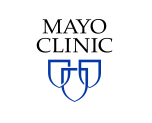Measurement of Hemodynamic Responses to Lower Body Negative Pressure
| Status: | Recruiting |
|---|---|
| Conditions: | Cardiology |
| Therapuetic Areas: | Cardiology / Vascular Diseases |
| Healthy: | No |
| Age Range: | 18 - 55 |
| Updated: | 2/14/2019 |
| Start Date: | January 8, 2019 |
| End Date: | January 2, 2020 |
| Contact: | Pam A Engrav |
| Email: | engrav.pamela@mayo.edu |
| Phone: | 507-255-6938 |
Physiology of the Early Stage of Hemorrhage and Early Identification of Progression Toward Hemodynamic Instability in Humans for Validation of Current Machine Learning Models
This study will be collecting data on participants undergoing lower body negative pressure
(LBNP) to simulate progressive blood loss. The goal of the study is to collect data to allow
for development of an algorithm with machine learning to predict blood pressure responses to
hypovolemia by analyzing the arterial waveforms collected during LBNP.
(LBNP) to simulate progressive blood loss. The goal of the study is to collect data to allow
for development of an algorithm with machine learning to predict blood pressure responses to
hypovolemia by analyzing the arterial waveforms collected during LBNP.
Death from exsanguination continues to be a major problem in combat casualty care and the
care of civilians subjected to trauma. The ability to detect significant blood loss using
traditional vital signs (heart rate, blood pressure) is marginal due to a variety of
compensatory mechanisms that maintain blood pressure in the face of marked reductions in
circulating blood volume. Along these lines, it is critical to develop monitoring devices and
algorithms to non-invasively assess central blood volume in humans for the purposes of
facilitating more timely interventions. The standard way to simulate hemorrhage in humans is
to use Lower Body Negative Pressure (LBNP). In this technique, the lower body of a supine
volunteer is enclosed in an airtight container while suction is applied to cause venous
pooling in the legs and reduce central blood volume. This technique generates many
physiological adaptations that are similar to that observed during blood loss studies in
animals and human volunteers. Thus, the purpose of this study is to obtain data for use in
developing monitoring technology to detect hemorrhage and other surrogate markers of central
blood volume in humans.
care of civilians subjected to trauma. The ability to detect significant blood loss using
traditional vital signs (heart rate, blood pressure) is marginal due to a variety of
compensatory mechanisms that maintain blood pressure in the face of marked reductions in
circulating blood volume. Along these lines, it is critical to develop monitoring devices and
algorithms to non-invasively assess central blood volume in humans for the purposes of
facilitating more timely interventions. The standard way to simulate hemorrhage in humans is
to use Lower Body Negative Pressure (LBNP). In this technique, the lower body of a supine
volunteer is enclosed in an airtight container while suction is applied to cause venous
pooling in the legs and reduce central blood volume. This technique generates many
physiological adaptations that are similar to that observed during blood loss studies in
animals and human volunteers. Thus, the purpose of this study is to obtain data for use in
developing monitoring technology to detect hemorrhage and other surrogate markers of central
blood volume in humans.
Inclusion criteria:
18-55 year of age Non-smoker No history of hypertension No history of diabetes No history
of coronary artery disease No history of neurologic disease
Exclusion criteria Prescribed medications other than birth control Inability to lie flat
for two hours BMI > 30 kg/m2
We found this trial at
3
sites
Mayo Clinic Arizona Mayo Clinic in Arizona provides medical care for thousands of people from...
Click here to add this to my saved trials
Mayo Clinic Florida Thousands of people come to Mayo Clinic in Jacksonville, Fla., annually for...
Click here to add this to my saved trials
Mayo Clinic Rochester Mayo Clinic is a nonprofit worldwide leader in medical care, research and...
Click here to add this to my saved trials


